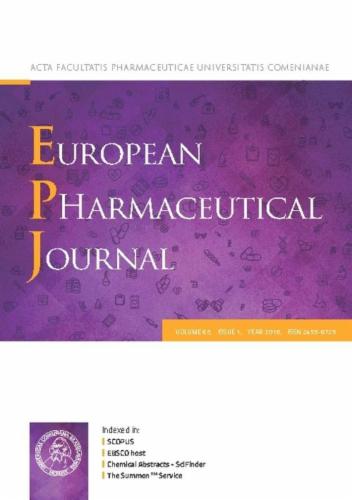cGAS-STING targeting offers a novel therapeutic paradigm in cardiovascular diseases
IF 4.7
3区 医学
Q1 PHARMACOLOGY & PHARMACY
引用次数: 0
Abstract
Cyclic GMP/AMP (cGAMP) synthase (cGAS), along with the endoplasmic reticulum (ER)-associated stimulator of interferon genes (STING), are crucial elements of the type 1 interferon response. cGAS senses microbial DNA and self-DNA, labeling cGAS-STING as a crucial mechanism in autoimmunity, sterile inflammatory responses, and cellular senescence. However, chronic and aberrant activation of the cGAS/STING axis results in inflammatory and autoimmune diseases. cGAS-STING has emerged as a vital mechanism driving inflammation-related diseases, including cardiovascular diseases (CVDs). Insights into the biology of the cGAS-STING pathway have enabled the discovery of small-molecule agents which have the potential to inhibit the cGAS-STING axis in many human diseases. In this review, we first outline the principal components of the cGAS-STING signaling cascade. From such we discuss recent research that highlights general mechanisms by which cGAS-STING contributes to CVDs. Then, we summarize a list of bioactive small-molecule compounds which modulate the cGAS-STING axis, reviewing their potential clinical applications. Finally, we discuss key limitations of this new proposed therapeutic approach and provide possible techniques to overcome them.These review highlights a novel groundbreaking therapeutic possibilities through targeting cGAS-STING in CVDs.

cGAS-STING靶向治疗为心血管疾病提供了一种新的治疗模式
环GMP/AMP (cGAMP)合成酶(cGAS)与内质网(ER)相关的干扰素基因刺激因子(STING)是1型干扰素应答的关键因素。cGAS感知微生物DNA和自身DNA,标记cGAS- sting是自身免疫、无菌炎症反应和细胞衰老的关键机制。然而,慢性和异常激活cGAS/STING轴导致炎症和自身免疫性疾病。cGAS-STING已成为驱动炎症相关疾病,包括心血管疾病(cvd)的重要机制。对cGAS-STING通路生物学的深入了解,使得在许多人类疾病中有可能抑制cGAS-STING轴的小分子药物得以发现。在这篇综述中,我们首先概述了cGAS-STING信号级联的主要成分。从这一点上,我们讨论了最近的研究,强调了cGAS-STING促进cvd的一般机制。然后,我们总结了一系列调节cGAS-STING轴的生物活性小分子化合物,并对其潜在的临床应用进行了综述。最后,我们讨论了这种新提出的治疗方法的主要局限性,并提供了可能的技术来克服它们。这些综述强调了通过靶向cGAS-STING治疗心血管疾病的一种新的突破性治疗可能性。
本文章由计算机程序翻译,如有差异,请以英文原文为准。
求助全文
约1分钟内获得全文
求助全文
来源期刊
CiteScore
9.60
自引率
2.20%
发文量
248
审稿时长
50 days
期刊介绍:
The journal publishes research articles, review articles and scientific commentaries on all aspects of the pharmaceutical sciences with emphasis on conceptual novelty and scientific quality. The Editors welcome articles in this multidisciplinary field, with a focus on topics relevant for drug discovery and development.
More specifically, the Journal publishes reports on medicinal chemistry, pharmacology, drug absorption and metabolism, pharmacokinetics and pharmacodynamics, pharmaceutical and biomedical analysis, drug delivery (including gene delivery), drug targeting, pharmaceutical technology, pharmaceutical biotechnology and clinical drug evaluation. The journal will typically not give priority to manuscripts focusing primarily on organic synthesis, natural products, adaptation of analytical approaches, or discussions pertaining to drug policy making.
Scientific commentaries and review articles are generally by invitation only or by consent of the Editors. Proceedings of scientific meetings may be published as special issues or supplements to the Journal.

 求助内容:
求助内容: 应助结果提醒方式:
应助结果提醒方式:


